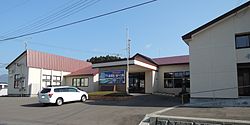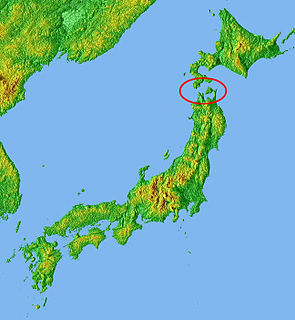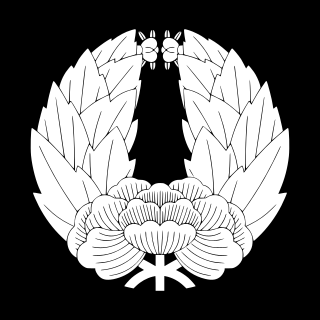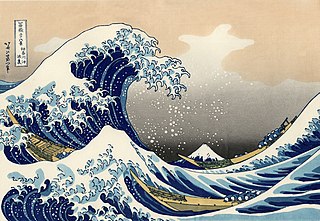
Kuroishi is a city located in Aomori Prefecture, Japan. As of 1 October 2017, the city had an estimated population of 32,260 and a population density of 150 persons per km2. The total area of the city is 217.05 square kilometres (83.80 sq mi).

Goshogawara is a city located in Aomori Prefecture, Japan. As of 31 December 2017, the city has an estimated population of 55,746 in 25540 households, and a population density of 140 persons per km2. The total area of the city is 404.18 square kilometres (156.05 sq mi).

Yokohama is a town located in Aomori Prefecture, Japan. As of 1 February 2017, the town had an estimated population of 4,711, and a population density of 37.3 persons per km², in 2107 households. The total area of the town is 126.38 square kilometres (48.80 sq mi).

Yomogita is a village located in Aomori Prefecture, Japan. As of 31 December 2017, the village had an estimated population of 2,869 in 1166 households, and a population density of 35 persons per km2. The total area of the village is 80.84 square kilometres (31.21 sq mi).

Ajigasawa is a town located in Aomori Prefecture, Japan. As of 30 October 2017, the town had an estimated population of 10,330 in 4612 households, and a population density of 30 persons per km2. The total area of the town is 343.08 square kilometres (132.46 sq mi).

Fukaura is a town located in Aomori Prefecture, Japan. As of 30 November 2017, the town had an estimated population of 8477 in 3792 households, and a population density of 17.0 persons per km². The total area of the town is 488.85 km2 (188.75 sq mi).

Nishimeya is a village located in Aomori Prefecture, Japan. As of 1 January 2018, the village had an estimated population of 1,356 in 531 households, and a population density of 5.91 persons per km2. The total area of the village is 246.02 square kilometres (94.99 sq mi).
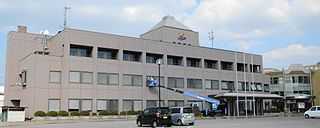
Fujisaki is a town in Aomori Prefecture, Japan. As of 1 September 2016, the town had an estimated population of 15,172 in 5943 households, and a population density of 410 persons per km². The total area of the town is 37.29 square kilometres (14.40 sq mi).

Ōwani is a town located in Aomori Prefecture, Japan. As of 31 December 2017, the town had an estimated population of 9,821in 4230 households and a population density of 60.0 persons per km². The total area of the town is 163.41 square kilometres (63.09 sq mi).

Inakadate is a village in Aomori Prefecture, Japan. As of 30 November 2017, the village has an estimated population of 7,985 in 2,736 households, and a population density of 362 persons per km². The total area of the village is 22.35 square kilometres (8.63 sq mi).

Itayanagi is a town located in Aomori Prefecture, Japan. As of 31 December 2017, the town had an estimated population of 13,517, and a population density of 320 persons per km². The total area of the town is 41.88 square kilometres (16.17 sq mi).
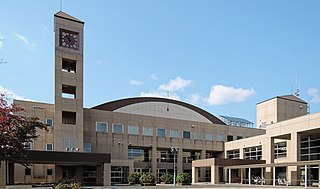
Tsuruta is a town located in Aomori Prefecture, Japan. As of 1 April 2017, the town had an estimated population of 13,322 in 5398 households,, and a population density of 290 persons per km2. The total area of the town is 46.4 square kilometres (17.9 sq mi). The name "Tsuruta" is a combination of the character for crane (鶴) with that for rice field (田).
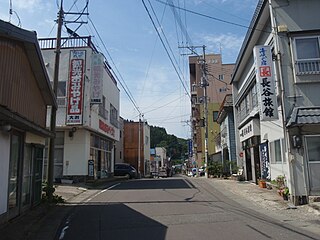
Kazamaura is a village located in Aomori Prefecture, Japan. As of 1 June 2017, the village had an estimated population of 2,002, and a population density of 28 persons per km2 in 942 households.. The total area of the village is 69.55 square kilometres (26.85 sq mi).

Sai is a village located in Aomori, Japan. As of 28 February 2017, the village had an estimated population of 2,149, and a population density of 15.9 persons per km2 in 978 households. Its total area of the village is 135.04 square kilometres (52.14 sq mi). In 2016, Sai was selected as one of The Most Beautiful Villages in Japan.

Tsugaru is a city located in Aomori Prefecture, Japan. As of 31 December 2017, the city had an estimated population of 33,254 in 13,750 households, and a population density of 130 persons per km². The total area of the city is 253.55 square kilometres (97.90 sq mi). The city's name is atypical for a Japanese place, in that it is written in hiragana rather than kanji.

Hirakawa is a city located in Aomori Prefecture, Japan. As of 31 December 2017, the city had an estimated population of 31,708 in 11,860 households, and a population density of 92.0 persons per km2. The total area of the city is 346.01 square kilometres (133.60 sq mi).
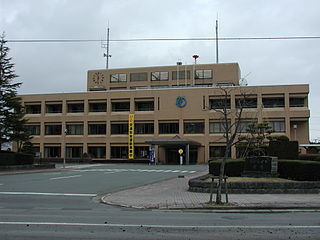
Oirase is a town located in Aomori Prefecture, Japan. As of 1 February 2017, the town had an estimated population of 25,377, and a population density of 353 persons per km², in 10,110 households. The total area of the town is 71.96 square kilometres (27.78 sq mi).

Sotogahama is a town located in Aomori Prefecture, Japan. As of 30 November 2017, the town had an estimated population of 5,860, and a population density of 25.4 persons per km2. The total area of the town is 230.29 square kilometres (88.92 sq mi).
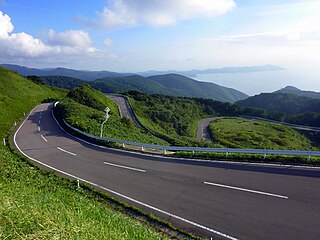
Nakadomari is a town located in Aomori Prefecture, Japan. As of 1 January 2018, the town had an estimated population of 11,406 in 5125 households, and a population density of 53 persons per km2. The total area of the town is 34 square kilometres (13 sq mi).





